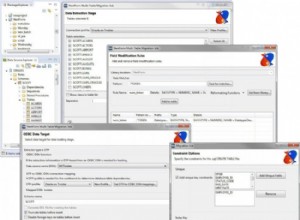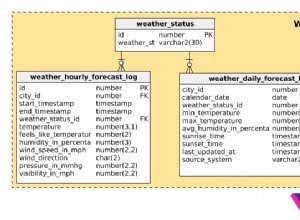Aqui está a solução com a qual eu finalmente fui. É apenas um método de extensão para a classe OracleDataReader. Este método tem um valor de tempo limite e uma função de retorno de chamada como parâmetros. A função de retorno de chamada normalmente (se nem sempre) seria OracleCommand.Cancel.
namespace ConsoleApplication1
{
public static class OracleDataReaderExtensions
{
public static bool Read(this OracleDataReader reader, int timeout, Action cancellationAction)
{
Task<bool> task = Task<bool>.Factory.StartNew(() =>
{
try
{
return reader.Read();
}
catch (OracleException ex)
{
// When cancellationAction is called below, it will trigger
// an ORA-01013 error in the Read call that is still executing.
// This exception can be ignored as we're handling the situation
// by throwing a TimeoutException.
if (ex.Number == 1013)
{
return false;
}
else
{
throw;
}
}
});
try
{
if (!task.Wait(timeout))
{
// call the cancellation callback function (i.e. OracleCommand.Cancel())
cancellationAction();
// throw an exception to notify calling code that a timeout has occurred
throw new TimeoutException("The OracleDataReader.Read operation has timed-out.");
}
return task.Result;
}
catch (AggregateException ae)
{
throw ae.Flatten();
}
}
}
}
Aqui está um exemplo de como ele pode ser usado.
namespace ConsoleApplication1
{
class Program
{
static string constring = "User ID=xxxx; Password=xxxx; Data Source=xxxx;";
static void Main(string[] args)
{
using (OracleConnection con = new OracleConnection(constring))
using (OracleCommand cmd = new OracleCommand())
{
cmd.Connection = con;
con.Open();
Console.WriteLine("Executing Query...");
string sql = "<some long running sql>";
cmd.CommandText = "PROC_A";
cmd.CommandType = System.Data.CommandType.StoredProcedure;
cmd.Parameters.Add(new OracleParameter("i_sql", OracleDbType.Varchar2) { Direction = ParameterDirection.Input, Value = sql });
cmd.Parameters.Add(new OracleParameter("o_cur1", OracleDbType.RefCursor) { Direction = ParameterDirection.Output });
try
{
// execute command and get reader for ref cursor
OracleDataReader reader = cmd.ExecuteReader(CommandBehavior.CloseConnection);
// read first record; this is where the ref cursor SQL gets evaluated
Console.WriteLine("Reading first record...");
if (reader.Read(3000, cmd.Cancel)) { }
// read remaining records
Console.WriteLine("Reading records 2 to N...");
while (reader.Read(3000, cmd.Cancel)) { }
}
catch (TimeoutException ex)
{
Console.WriteLine("Exception: {0}", ex.Message);
}
Console.WriteLine("Press any key to continue...");
Console.Read();
}
}
}
}
E aqui está um exemplo da saída.
Executing Query...
Reading first record...
Exception: The OracleDataReader.Read operation has timed-out.
Press any key to continue...




